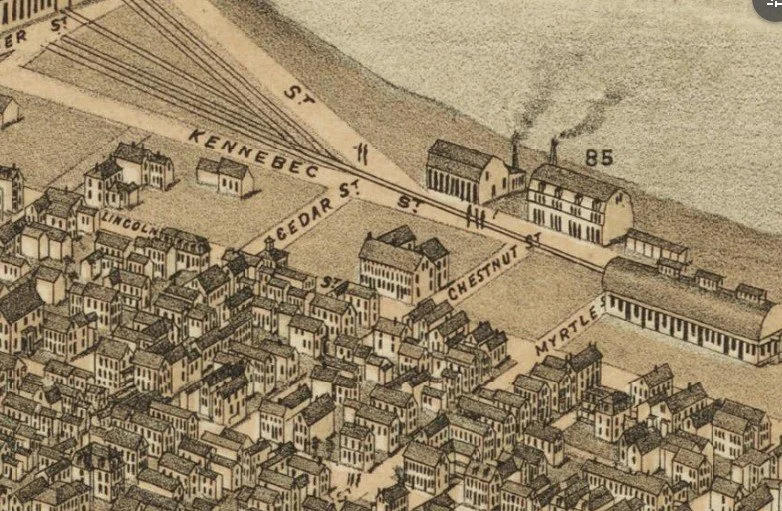Traveling Washington Avenue, there are so many intriguing properties! From the slate clad Victorian stunner on the corner of Morse Street to the out of this world porch and fully structural bay front of the house across from the call center, it is hard to narrow down the most interesting. However, when you see the small stone house at 1063 Washington Avenue, it makes sense why one would be curious about its story!
Set in the “Washington Terrace” land development designed in 1916, the property was owned by Augustus Bove, a prominent Naples Maine businessman and former legislator. Over the next several years, Bove remained connected to the site, despite the announcement of a Sheriff’s auction to be held in 1926 after a court case lost to the Economy Gas and Electrical Company and several years of reported unpaid taxes for the site in 1929-31. By 1943 the property was owned by A.H Chapman Land Co, who ran their business out of the first floor of the Mechanics’ Hall on Congress Street.
By 1949 the land was owned by Donato (Daniel) Donatelli and his wife Maria. Donato was a well-known contractor in Portland who before starting his own company worked as a brick and stone mason. Given we know he pulled the permit for 1061 Washington Avenue (a brick ranch) next door, these two houses show exactly where Donatelli’s craftsmanship lies.
1063 Washington was ready for occupancy by August of 1951 and dubbed in the newspaper, a “European Style Dream Home”. By 1952, the house gained its first occupants in successful lawyer Bennett Fuller and his wife Eleanor, who moved from the peninsula to the suburbs of Portland. While living in the fieldstone-clad house, Bennett was highly involved with the politics of the time and is often noted as running for office. He did serve as Assistant County Attorney for Cumberland County for a year as well as Associate Judge of the South Portland Municipal Court. Bennet and Eleanor sold the house after just 10 years to Mrs. Mary Mundrell (AKA Mandarelli). Mundrell, a widow of 8 years, had three sons and four daughters but in 1962 only Samuel is listed as living with her at the 1063 address. Under the Mandarelli name, Samuel is listed as the sole occupant in street directories by 1972, however we know that he was married to Earlyne (until divorce in 1977) and has two children, Sammy and Rhonda.
By 1982, the house was sold again to Jerome B. and Kathie Watts. Jerome worked at the Portland Water Department (one of the staff’s other favorite structures in Portland) as a surveyor.















